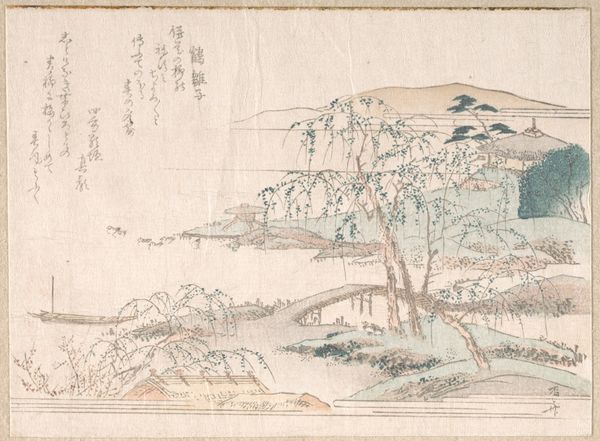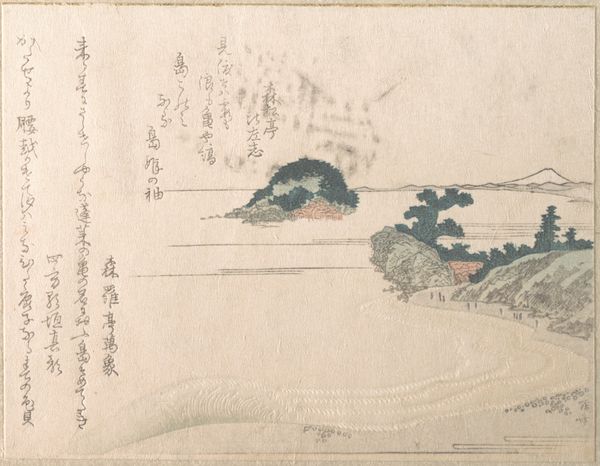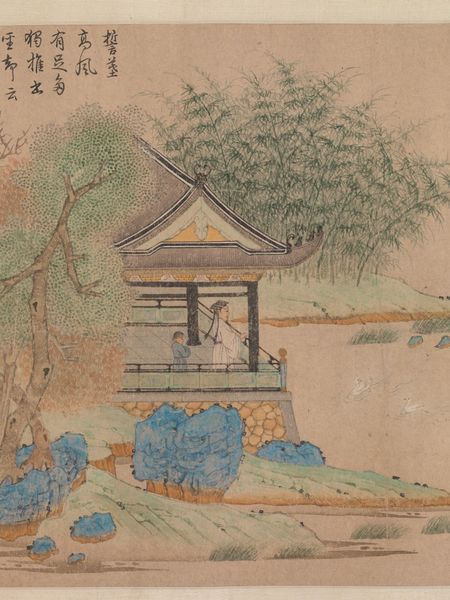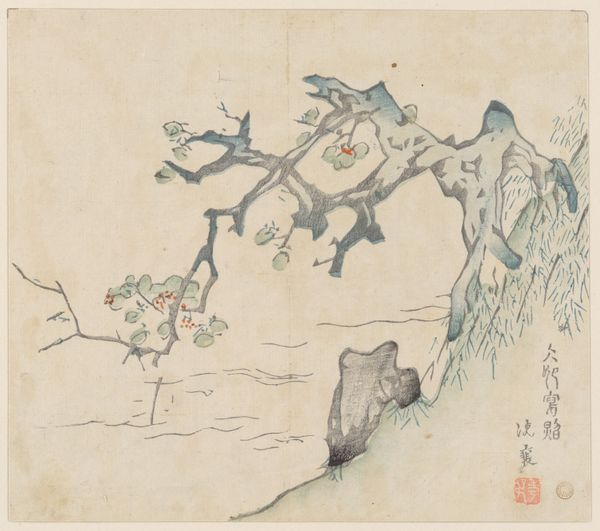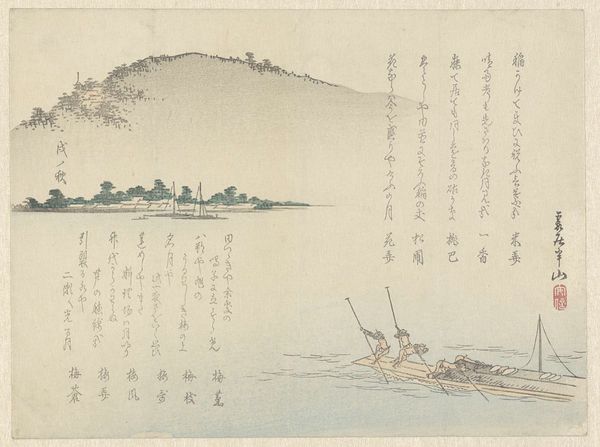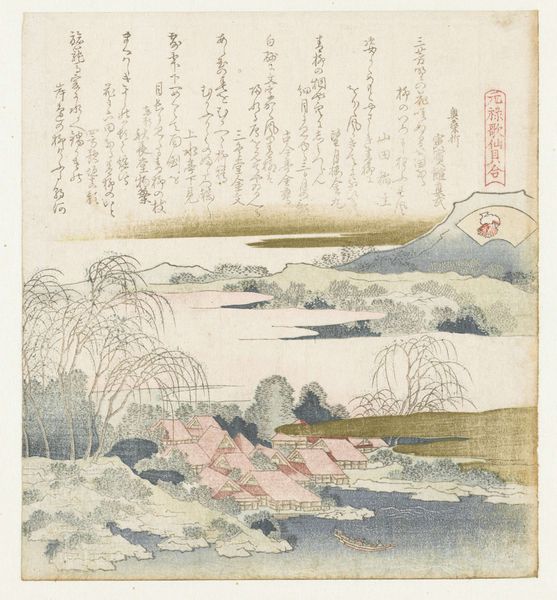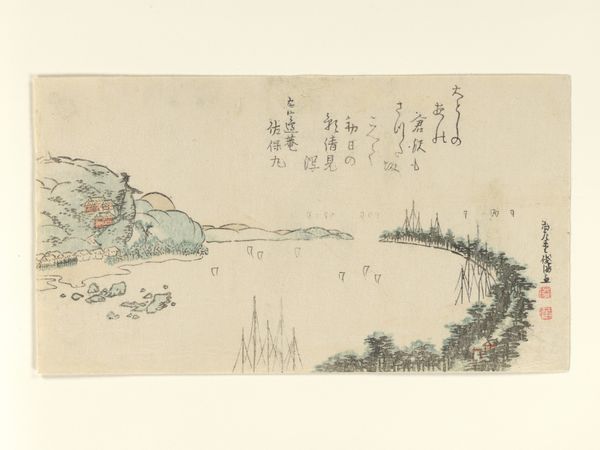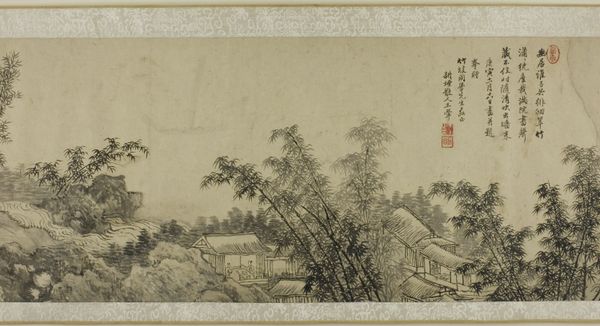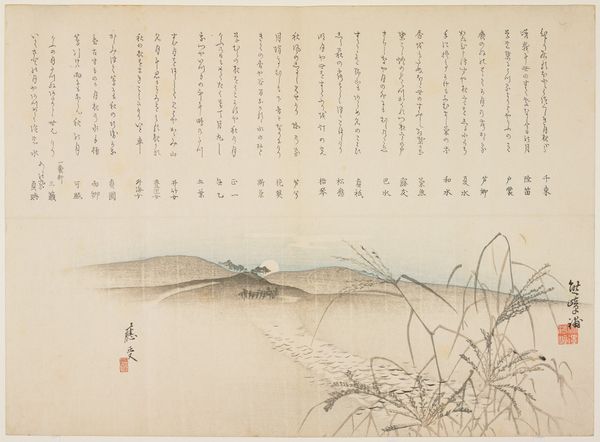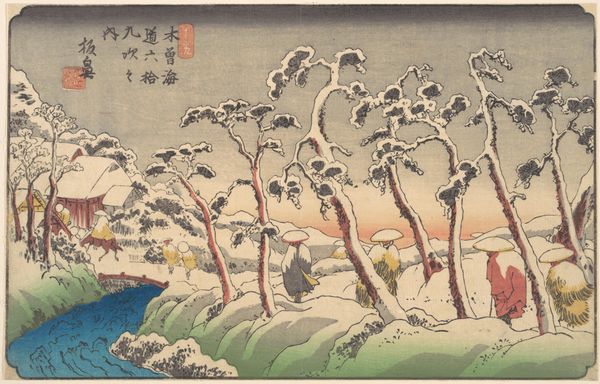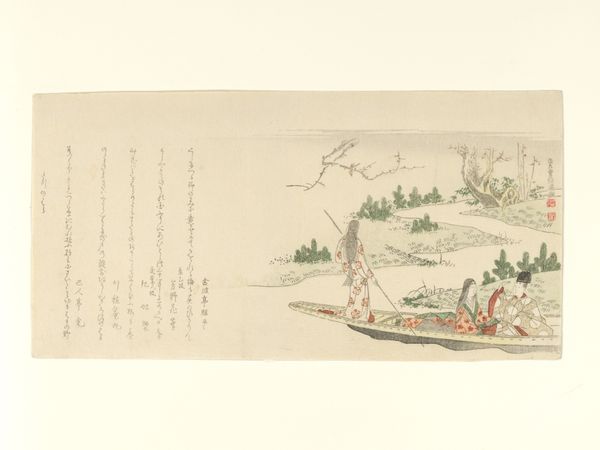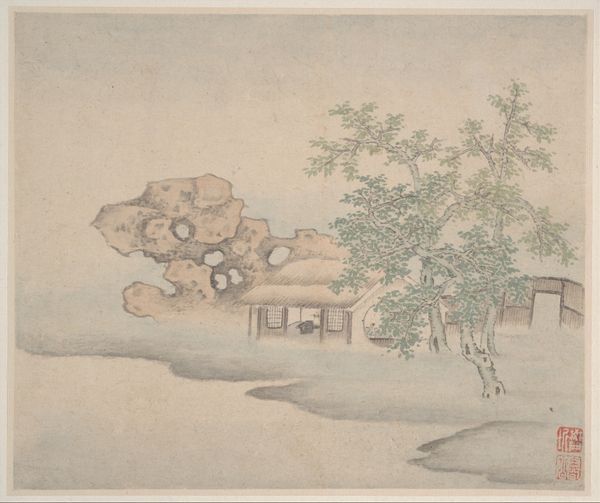
Spring Rain Collection (Harusame shū), vol. 2: Cranes at Tsurugaoka Hachimangō Shrine in Kamakura 1810s
0:00
0:00
print, paper, woodblock-print
# print
#
asian-art
#
landscape
#
etching
#
ukiyo-e
#
paper
#
woodblock-print
Dimensions: 5 1/2 x 7 1/4 in. (14 x 18.4 cm)
Copyright: Public Domain
Curator: Welcome. We are standing before a print by Ryūryūkyo Shinsai titled "Cranes at Tsurugaoka Hachimangū Shrine in Kamakura," part of the "Spring Rain Collection" and dating from the 1810s. Editor: My first impression is its elegant austerity. The palette is remarkably restrained, dominated by pale hues. It evokes a profound sense of quiet contemplation and a subtle, nuanced perception. Curator: Indeed. This Ukiyo-e print speaks volumes about the intersection of nature, spirituality, and social space within Japanese society at that time. The cranes are not merely aesthetic elements, but symbols of longevity and good fortune, deeply interwoven with cultural beliefs and practices. Their presence at the Tsurugaoka Hachimangū Shrine points to a complex relationship between religious institutions and community life, layered with histories of political power, class structure, and cultural identity. Editor: What strikes me is the compositional strategy. The placement of the torii gates—one in the foreground and a suggestive second layer, create a strong sense of depth. They act as frames within frames, guiding the eye toward the distant horizon and framing our encounter with the landscape. This conscious manipulation of space is a deliberate artistic choice, a strategy for organizing vision itself. Curator: Absolutely. And the scale! These religious spaces weren't neutral. Access, who was allowed, what sort of offerings one brought—everything spoke to power relations. Shinsai uses that and infuses these commonplace symbols with spiritual and social weight. The composition directs us to unpack the power structures embedded in everyday landscapes. Editor: Note how the line work, even in the representation of the natural forms such as the pine tree, remains linear, diagrammatic—almost symbolic, instead of mimetic. It is an exploration in lines that delineate planes in an non-Western sense. Curator: Exactly. This work reminds us that even in seemingly tranquil landscape prints, sociopolitical forces are always present, shaping both the environment and our perception of it. Editor: It shows how aesthetic experience relies on structure—line, composition, depth—it provides avenues toward understanding not just an image, but also modes of thinking about what we are viewing. Curator: By engaging with Shinsai’s work, we’re invited to consider our own positioning within broader narratives. Editor: We're led toward questioning what structures our experience in viewing art as an isolated practice when it's so intricately interwoven.
Comments
No comments
Be the first to comment and join the conversation on the ultimate creative platform.
